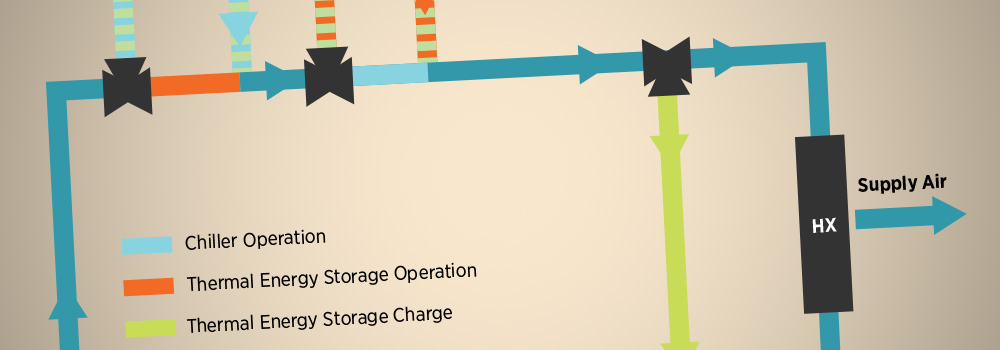
Problem
Most air conditioning systems remove heat from a building at precisely the time that cooling is needed. Thermal energy storage (TES) systems operate like air conditioning systems except that they remove heat from an intermediate substance (e.g., water, ice or eutectic salt solutions) at a time when the building doesn’t actually need cooling. In this way, cooling is stored before it is needed, giving TES systems the ability to shift demand on the electric grid.
The current method for estimating the electric grid impact of TES is based on a “10-day average baseline,” where the value provided by the TES system for a given hour is defined as the difference between the average energy use of the building for that hour over the past ten similar days and the measured energy use for that hour.
Solution
A potentially more accurate method for determining the electric grid impact of TES systems would be to measure the cooling delivered by a TES system, and then compare it with the electricity that would have been consumed to deliver that cooling at that time in that application. Determining the electric demand that would have been required by the primary cooling system, which may depend upon cooling equipment type and the particular application, becomes the primary challenge.
Goal and Results
2018
With funding from Ingersoll Rand/Trane, WCEC performed simulations for three building types and five types of cooling systems in three California climate zones. Researchers input the cooling loads and ambient weather conditions into a post-processor that calculated the electric-grid impacts incurred from meeting the loads for each type of cooling system, compared to a TES system. Researchers then estimated the accuracy of the “10-day average baseline” electricity-use forecast method.
The “10-day average baseline” method consistently under-predicted the impact that a TES system would have on the electric grid by an average of 38 to 57% .
WCEC supports the development of electricity-use forecast methods that more accurately reflect the value of TES, possibly based on real-time monitoring of TES systems.
Publications and Downloads
- CPUC RESOLUTION E-5106 (Public Utility Commission Code Draft, 2020)
- Analysis of Greenhouse Gas Emissions Reductions Using Functional Storage Options in California (Technical Report, 2020)
- Valuation of Thermal Energy Storage for Utility Grid Operators (Project Report, 2018)
- Valuation of Thermal Energy Storage for Utility Grid Operators (Case Study, 2018)

